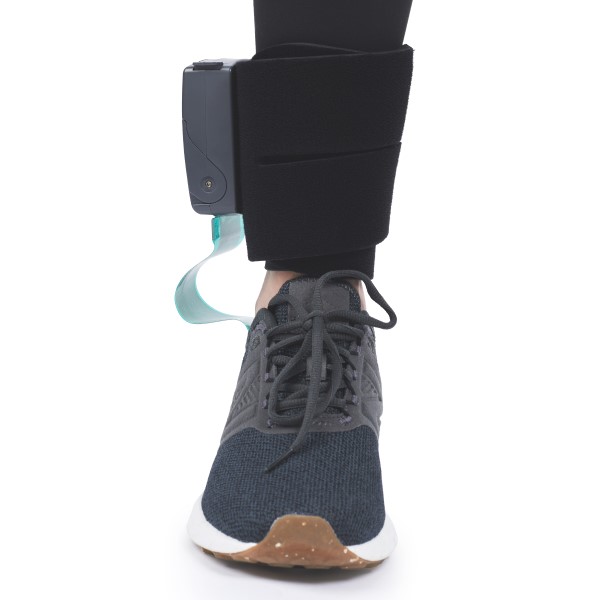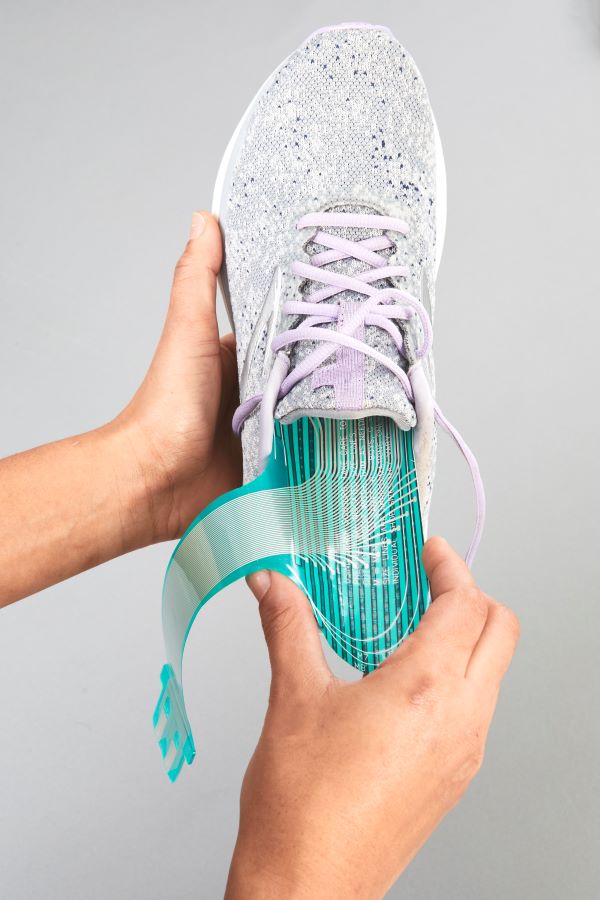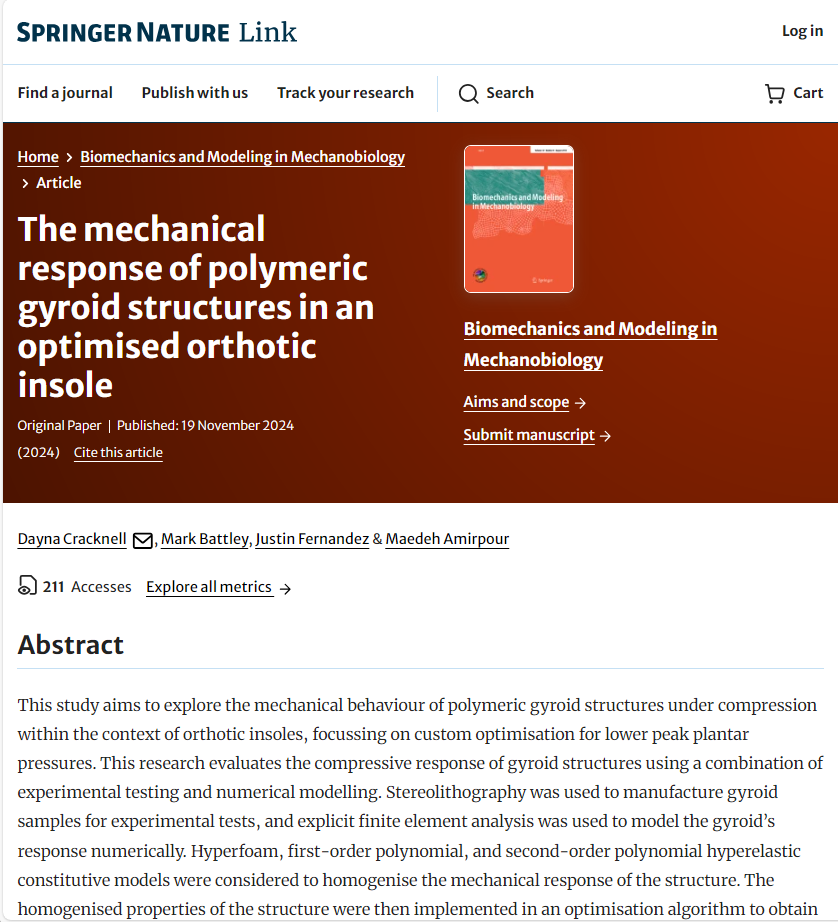Exploring Innovations in Orthotic Insole Design: An Interview with Researcher Dayna Cracknell
In the realm of biomechanics, understanding how different materials influence in-shoe pressure distribution is crucial for enhancing orthotic insole design. A recent study titled "The Mechanical Response of Polymeric Gyroid Structures in an Optimised Orthotic Insole" delves into this subject, utilizing the F-Scan GO system to measure plantar pressure differences.
The research studied the mechanical behavior of different configurations of materials - gyroid structures - used in making orthotic insoles. The aim was to find the best method to form this material to reduce peak planter pressures. The researchers used the F-Scan GO system to measure the planter pressure differences in test subjects using the insoles.
We had the opportunity to speak with one of the authors of this paper, Dayna Cracknell, a Doctoral Candidate at The University of Auckland in New Zealand, about her research and the role of the F-Scan GO in her work.
Responses lightly edited for clarity.
Tekscan: Congrats on your PhD submission! What got you interested in studying orthotics?
Dayna Cracknell: "Thank you! I have always been interested in the bridge between healthcare and mechanical engineering and was dabbling in 3D printing. This was such an easy choice because every part of the project was interesting to me!"

Could you summarize the key findings from your study?
"My PhD looked at an orthotic insole made of a fluid filled lattice, with the idea being that the fluid could help even out the pressure distribution on the bottom of the foot in real time. Our findings indicate that it worked: that incorporating fluid into the insole enhanced its performance throughout the gait cycle."
Why did you choose the F-Scan™ GO system to assist your research, and how did it facilitate your data collection?
"Firstly, we were seeing a lot of other researchers in a similar space using this system, so we knew that it was well regarded. Additionally, our lab has a large collection of Tekscan pressure mats – some of them are very old (I would say at least 20 years) and they still work great (even though they have seen a LOT of wear and tear!) so we could assume that the F-Scan GO system would last a long time. We were also familiar with the old system, so it felt like a good move."
About Dayna Cracknell
Dayna Cracknell is a Doctoral Candidate at The University of Auckland in New Zealand.
---
Key Takeaways:
- Innovative Design: The study introduced a fluid-filled lattice structure within orthotic insoles, aiming to improve real-time pressure distribution during gait.
- Enhanced Performance: Incorporating fluid into the insole material demonstrated a notable improvement in distributing plantar pressures, potentially leading to more effective orthotic solutions.
- Reliability of F-Scan GO: The F-Scan GO system's high-resolution sensors and cordless, wearable design provided accurate, real-time data, facilitating comprehensive gait analysis in both lab and field settings.
About the F-Scan GO System:
The F-Scan GO is a state-of-the-art, cordless in-shoe gait analysis system that offers:
- Freedom of Movement: Lightweight, wireless electronics encourage natural gait without the constraints of cables.
- High-Resolution Data: Equipped with the highest resolution sensors available, it provides detailed in-shoe pressure measurements essential for accurate gait assessment.
- Versatility: Suitable for both laboratory and field research, the system's portability and compatibility with external devices like EMG and motion capture systems make it a preferred choice for biomechanics studies.

Explore the Possibilities
This research illustrates the innovative strides being made in orthotic insole design, with the F-Scan GO system at the forefront of data-driven biomechanics studies. These advancements hold promise for creating more effective orthotic solutions that improve patient outcomes.
Are you curious about how the F-Scan GO system can support your research or clinical applications? Contact us to explore how Tekscan technology can enhance your work.



